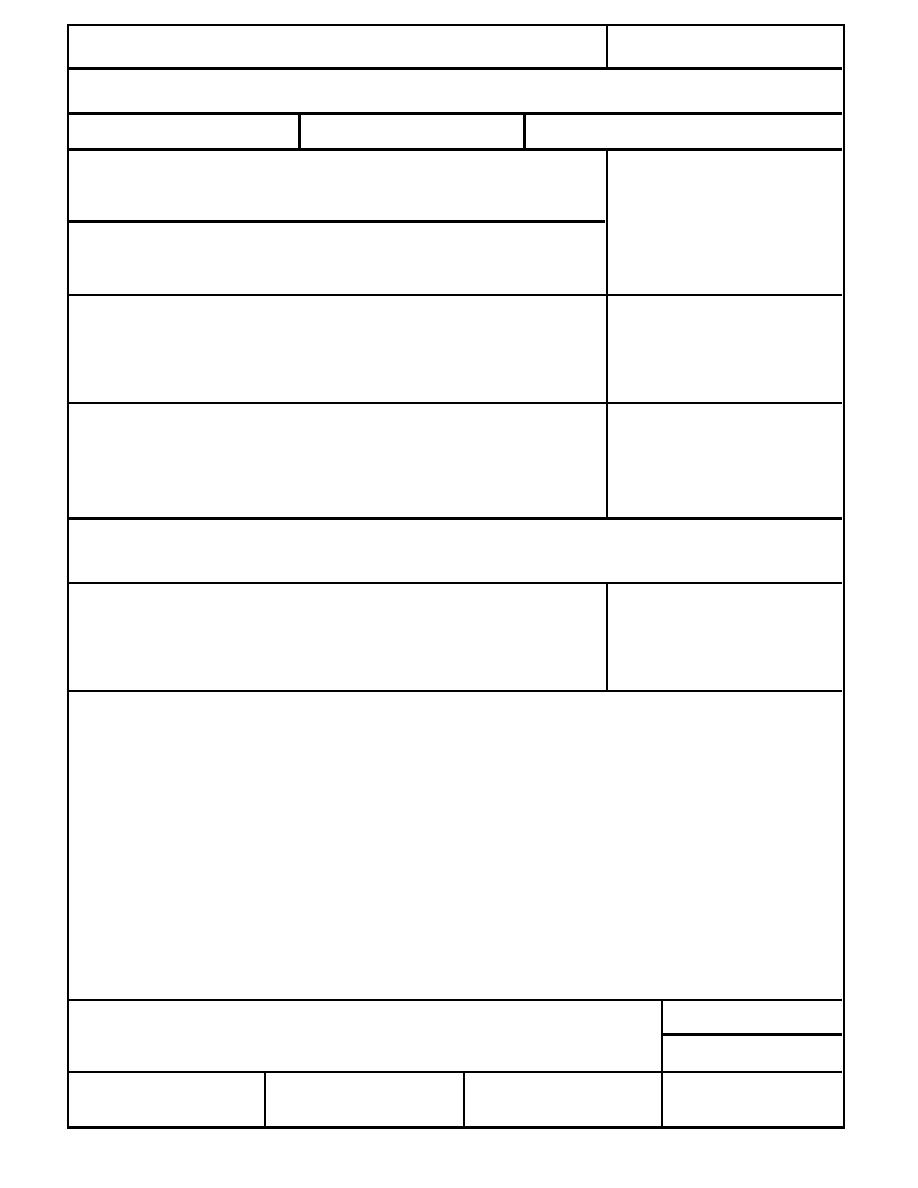
Form Approved
REPORT DOCUMENTATION PAGE
OMB No. 0704-0188
Public reporting burden for this collection of information is estimated to average 1 hour per response, including the time for reviewing instructions, searching existing data sources, gathering and
maintaining the data needed, and completing and reviewing the collection of information. Send comments regarding this burden estimate or any other aspect of this collection of information,
including suggestion for reducing this burden, to Washington Headquarters Services, Directorate for Information Operations and Reports, 1215 Jefferson Davis Highway, Suite 1204, Arlington,
VA 22202-4302, and to the Office of Management and Budget, Paperwork Reduction Project (0704-0188), Washington, DC 20503.
1. AGENCY USE ONLY (Leave blank)
2. REPORT DATE
3. REPORT TYPE AND DATES COVERED
August 1997
4. TITLE AND SUBTITLE
5. FUNDING NUMBERS
On-Site Analysis of Explosives in Soil: Evaluation of Thin-Layer
Chromatography for Confirmation of Analyte Identity
6. AUTHORS
Sae-Im Nam
7. PERFORMING ORGANIZATION NAME(S) AND ADDRESS(ES)
8. PERFORMING ORGANIZATION
REPORT NUMBER
Special Report 97-21
U.S. Army Cold Regions Research and Engineering Laboratory
72 Lyme Road
Hanover, New Hampshire 03755-1290
9. SPONSORING/MONITORING AGENCY NAME(S) AND ADDRESS(ES)
10. SPONSORING/MONITORING
AGENCY REPORT NUMBER
U.S. Army Environmental Center
SFIM-AEC-ET-CR-97030
Aberdeen Proving Ground, Maryland 21010-5401
11. SUPPLEMENTARY NOTES
12a. DISTRIBUTION/AVAILABILITY STATEMENT
12b. DISTRIBUTION CODE
Approved for public release; distribution is unlimited.
Available from NTIS, Springfield, Virginia 22161
13. ABSTRACT (Maximum 200 words)
Two colorimetric-based methods are commonly used for on-site analysis of explosives in soil. For the TNT method,
acetone soil extracts are reacted with base to produce reddish-colored Janowsky ions. For RDX, acetone extracts are
acidified and reacted with zinc to reduce RDX to nitrous acid, and the nitrous acid is determined by reacting the
resulting solution with a Griess reagent. The TNT method is subject to interference from the presence of other
polynitroaromatic compounds such as TNB, tetryl, and the isomers of DNT. Likewise, the RDX method is inter-
fered with by the presence of other nitramines such as HMX and tetryl, and organonitrate esters such as NG, PETN,
and NC. This study investigates the use of thin-layer chromatography (TLC) as a simple on-site method to confirm
the identity of analytes detected using colorimetric on-site methods. Separations using both laboratory-grade and
locally available solvents were developed. The major limitation of this method is detection capability, which was
estimated to be about 0.1 g of analyte. This corresponds to a concentration of 17 g/g when using 30 L of spot-
ting volume, or 500 g/g when using 1 L of spotting volume.
14. SUBJECT TERMS
15. NUMBER OF PAGES
Colorimetric methods
Planar chromatography
TNT
21
Explosives
RDX
Thin-layer
16. PRICE CODE
On-site analysis
Soil
chromatography
17. SECURITY CLASSIFICATION
18. SECURITY CLASSIFICATION
19. SECURITY CLASSIFICATION
20. LIMITATION OF ABSTRACT
OF REPORT
OF THIS PAGE
OF ABSTRACT
UNCLASSIFIED
UNCLASSIFIED
UNCLASSIFIED
UL
Standard Form 298 (Rev. 2-89)
NSN 7540-01-280-5500
Prescribed by ANSI Std. Z39-18
298-102



 Previous Page
Previous Page
